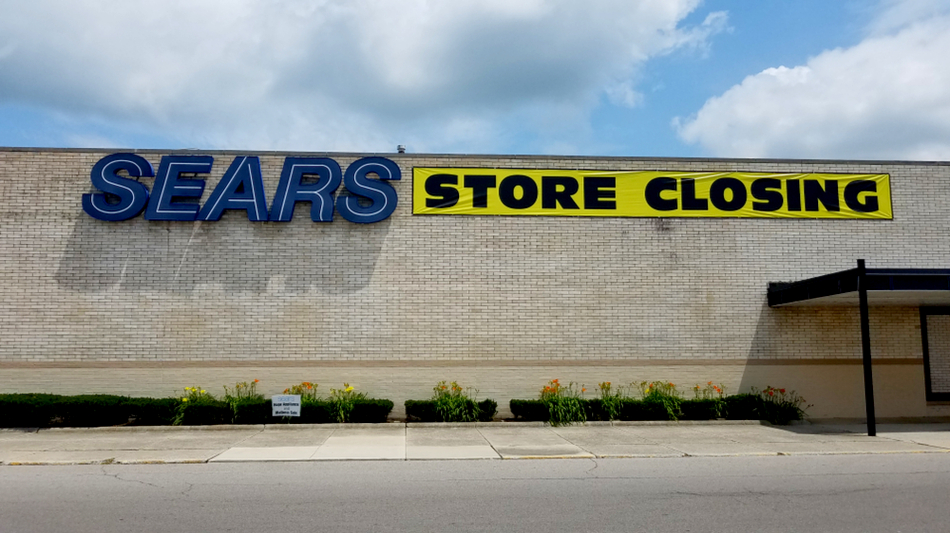The most high-profile tragedy in the retail world of the last few years has to be the fall of Sears. Once the single largest retailer in the United States, Sears couldn’t adapt to changing retail trends, first by not anticipating the rise of the superstore, and then later by falling well short of the kind of technological innovation that has kept their heirs to the throne such as Walmart and Amazon at the top of the retail market. While the doom saying about the fall of brick-and-mortar is largely just hype and hyperbole by analysts who only think in terms of online sales, the fall of Sears is an excellent example of the cardinal rule of modern brick-and-mortar: Always be innovating.
A cascading series of bad decisions and antiquated practices ultimately led to the fall of Sears, a once proud retail giant pushed into a greatly reduced market share. Perhaps most unfortunately, their brand cachet has fallen. While the remaining locations still stock a wide variety of items at decent prices, their shrinking footprint and a reputation as a kind of diminished last option have left the company in a poor position to make the kind of investment needed to bounce back in the modern retail world. But with the benefit of hindsight, it’s possible to avoid their mistakes and forge ahead into the future.
Once and Future King
Sears began life as a mail-order catalog company, distributing catalogs and shipping items out of central plants. In many ways, this model was a precursor to the now ubiquitous online retail outlets, and the company experienced great success as might be expected for much the same reasons retailer such as Amazon and Alibaba experience continued growth. They offered a wide variety of products at competitive prices, which offset the inconvenience of waiting for orders to be filled and shipped.
However, sensing an opportunity to mitigate the disadvantages of their mail-order business, the company went brick-and-mortar in 1925, first converting existing shipping locations and then later building freestanding outlets. These were a runaway success, and Sears cemented itself atop the retail game for years. The department stores carried an enormous selection of different goods at low prices, making them destinations for shoppers looking for a wide variety of items. It’s a perfect example of adapting to changing retail trends: Sears was able to successfully leverage their existing inventory, infrastructure, and supply chain in order to jump start a brick-and-mortar business. At this point, it’s an old story that has been repeated as a path to success for many other retailers. Then came Walmart, and with it the supercenter.
Rise of the Supercenter
While coming from humble beginnings, Walmart has become the biggest player in brick-and-mortar in the US and an international force to be reckoned with. One of their most important innovations was the supercenter format, which diversified their offerings into grocery, pharmacy, electronics, and other sectors. That broad product base turned out to be the future of big-box retail, with competitors either becoming hyper-specialized — such as Best Buy or Home Depot — or else going the supercenter route and incorporating a one-stop shopping format into their locations. Sears did neither, and while they did expand their product line the company has remained a more old-fashioned discount department store. Walmart plunged ahead, overtaking Sears as the top retailer in the country, and never looked back. Some say a culture of insularity and denialism fostered the fall, and since corporate was unwilling to adapt the company stalled. Now, Sears has merged with another failing big-box giant, Kmart, and is closing stores at a rapid pace.
Paradigm Shift
It’s ironic that the logical progression of Sears’s origins, online retail, would be the force that changed the retail landscape and made a comeback for the once venerable giant even more unlikely. Changing retail trends driven by online shopping have forced success stories like Walmart to innovate and adopt new, high-tech solutions in order to compete. While brick-and-mortar companies are mounting successful charges on Amazon’s domination of the online space, Sears has lagged behind. Customer experience is a vitally important advantage of brick-and mortar retail, and Sears has lagged behind in this area. While competitors leverage their online services to better serve their shoppers, Sears has failed on even more basic fronts. A quick Google search will show messy, outdated merchandising, a symptom of anemic investment and understaffed stores. And now, their once store-exclusive product lines like Craftsman and Kenmore are being sold on Amazon.
The fall of Sears is an ideal cautionary tale. A failure to adapt early has led to a failure to adapt later. The message is clear: innovate early, and innovate often.


